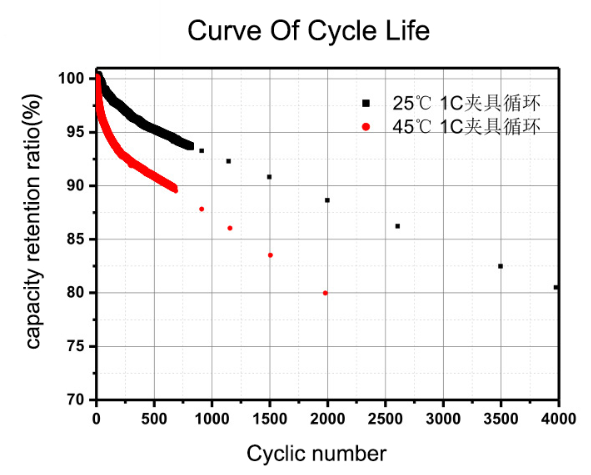Section 1: Factors Influencing LiFePO4 Battery Cycle Life
The cycle life of a LiFePO4 battery is governed by a combination of physical and chemical reactions. Several factors impact its longevity:
- Charging and Discharging
It is crucial to use a charger equipped with a proper cutoff mechanism to prevent overcharging, which can reduce the lifespan of a lithium iron phosphate battery. Generally, slower charging rates are preferable as they help extend battery life. - Discharge Depth
The depth of discharge significantly influences the longevity of LiFePO4 batteries. A lower depth of discharge can greatly enhance the battery’s lifespan, while deeper discharges can shorten it. Avoiding full discharges to very low voltages is advisable. - Temperature Conditions
High operational temperatures can degrade the electrode activity of LiFePO4 batteries, shortening their lifespan. Maintaining a moderate operating temperature is beneficial for prolonging battery life.

Section 2: LiFePO4 Battery Life Cycle at Normal Temperatures
Under typical conditions, LiFePO4 batteries have a cycle life exceeding 2,000 cycles. However, this varies based on usage intensity:
- Stable High C-rate Discharge: Primarily used in power applications, such as motor power supply, where high-load conditions are common, the cycle life can be around 800 cycles.
- Unstable High C-rate Discharge: More erratic usage can drastically reduce the lifespan, typically to about 300 cycles.
Section 3: LiFePO4 Battery Life Cycle at Elevated Temperatures
High temperatures pose challenges to LiFePO4 battery performance:
- Low Current Operations: If quality-controlled and from reputable manufacturers, batteries can achieve over 1,000 cycles. However, lesser-quality batteries might only endure around 500 cycles.
- Stable High C-rate Discharge: Under continuous high-load conditions, even high-quality batteries may not exceed 500 cycles due to accelerated material decay.
- Unstable High C-rate Discharge: Frequent unstable conditions can further reduce the lifespan, with batteries becoming unusable after 250 to 300 cycles.
Section 4: LiFePO4 Battery Life Cycle in Cold Environments
Cold temperatures have a more severe effect than high temperatures, potentially reducing the cycle life to as few as 300 cycles due to operational limitations in extreme cold.
Section 5: Testing LiFePO4 Battery Cycle Life
The life and performance of LiFePO4 batteries can be assessed through various tests, such as:
- Charge and Discharge Cycle Test: Simulates normal usage to evaluate battery stability over multiple cycles.
- Capacity Fading Test: Tracks the battery’s ability to retain charge over time.
- Temperature Performance Test: Assesses battery functionality under varying temperatures.
- Internal Resistance Test: Evaluates performance impact due to internal resistance changes.
- Safety Performance Testing: Ensures stability and safety under abnormal conditions.
Section 6: Enhancing the Cycle Life of LiFePO4 Batteries
To maximize the life of LiFePO4 batteries, consider the following practices:
- Minimize Deep Discharges: Keep the State of Charge between 20% and 80%.
- Adopt Optimal Charging Practices: Avoid charging to full capacity frequently and use a quality charger designed for LiFePO4 batteries.
- Manage Temperature Effectively: Operate and store the battery within recommended temperature ranges.
- Control Discharge Rates: Limit the discharge rate to recommended levels and employ a quality Battery Management System (BMS) to monitor battery conditions.
- Implement Proper Storage Practices: Store batteries at a partial charge state and avoid long periods of inactivity.
- Ensure Cell Balance: Utilize BMS with cell balancing features and occasionally run equalization processes.
- Utilize Appropriate Tools: Regularly monitor battery parameters through BMS and maintain logs for tracking battery health.
- Limit High Power Demands: Avoid or adequately manage high-drain applications to prevent accelerated wear.
These guidelines help maintain the efficacy and extend the cycle life of LiFePO4 battery (lithium iron phosphate battery), making them a reliable choice for various applications.
